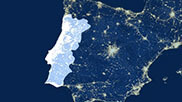Public Deliverables
WP1 aims to: [1] Review recent and on-going policy and regulatory initiatives that may shape the grids and market of the future; [2] Assess and draw lessons learnt from recent and on-going research and demonstration initiatives relevant to the project objectives; [3] Define a future vision for challenges and opportunities for European electricity grids and markets.
WP2 aims to: [1] Define the specifications for the flexibility services procured by DSOs according to transparent, non-discriminatory, technology agnostic and market-based procedures considering interaction with TSO and market players [2] Design and implement of the UMEI – Universal Market Enabler Interface – which consists of an API interface defining the needs to connect the DSO to the market flexibility providers; [3] Bring further support to the materialisation of the DSO role as market facilitator through the design of current and futures business use cases, allowing the UMEI concept to keep evolving along with European policies and national regulatory frameworks; [4] Define the global project system architecture, linking the smarter grids evolution to evolving flexibility market solutions in order to fit the challenges brought about by the energy transition at distribution level
WP3 aims to: [1] develop a flexibility toolbox, identifying the technologies and systems (e.g. multi-energy carriers, microgrid, virtual power plants) most suitable to provide flexibility services to the distribution grid and mapping their availability at various grid locations and timescales; [2] link standardised flexibility services with , i.e. product specifications; [3] develop flexibility assessment tools, capable of quantifying flexibility available in the different points of the network to provide the specified services.
WP5 aims to: [1] Identify the relevant market mechanisms for the procurement of flexibility needs and grid services defined in T2.1; [2] Design of a methodology for dynamic distribution grid tariffs, considering the preferences of the flexibility providers; [3] Align the specifications of the market platforms with the market mechanisms developed in T5.1; [4] Analyse the impact for the delivery of innovative products and services from a peer-to-peer market perspective; [5] Evaluate the proposed market mechanisms from a multi-stakeholder perspective.
WP6 aims to: [1] monitor the parallel developments of the DEMOs of EUniversal, [2] foster harmonisation and coherent developments of the 3 DEMOs’ activities in coordination with the DEMO Leaders Board; [3] provide continuous evaluation of the policy and regulatory context related to the DEMOs.
WP8 aims to: [1] Achieve enhanced observability – Establish the estimation and forecast of the grid state from the chosen LV Grid. Aggregate and predict the flexibility potential in the LV Grid [2] Provide the flexibilities over the UMEI to two market platforms. [3] Integrate the flexibilities into a scheduler-based congestion management [4] Enabling the provision of flexibilities to LV/MV connection point and therefore to the MV Grid.
WP10 aims to: [1] Develop business model archetypes for flexibility mechanisms, looking at potential users, as well as value proposition, value chain, and profit model; [2] Provide regulatory remedies for the obstacles to innovation under the current context and future market design context; [3] Replicability and scalability analysis to ensure the maximum impact of the project demo’s, solutions, and results; [4] Develop Roadmap with coherent set of key results and main
project messages to be disseminated and exploited.
WP11 aims to: [1] Implement dissemination, communication and training strategies integrated within the Dissemination Plan. [2] Identify, design and carry out dissemination and communication activities during the project’s lifecycle. [3] to create synergies among similar EU-funded projects through the BRIDGE initiative based on a solid cooperation. [4] to increase social awareness and acceptance of EUniversal innovative solutions fostering an energy transition.
WP12 aims to: [1] Coordinating the actions of participants and progress monitoring for achievements of project goals to ensure the delivery of results in a timely, cost-effective way with scientific and technical excellence; [2] Financial and administrative management; [3] Reliable interface to the European Commission (EC), the external stakeholders and the public at large; [4] Identification and mitigation of project risks by performing an effective risk management; [5] Manage the project IP.






